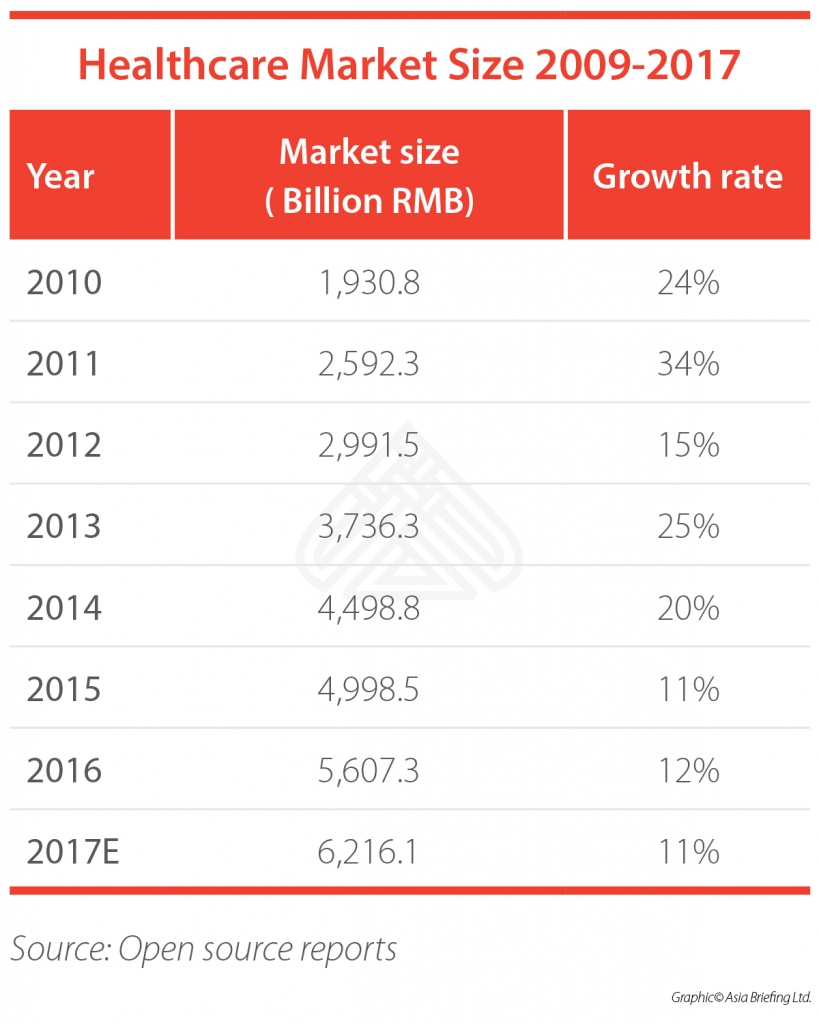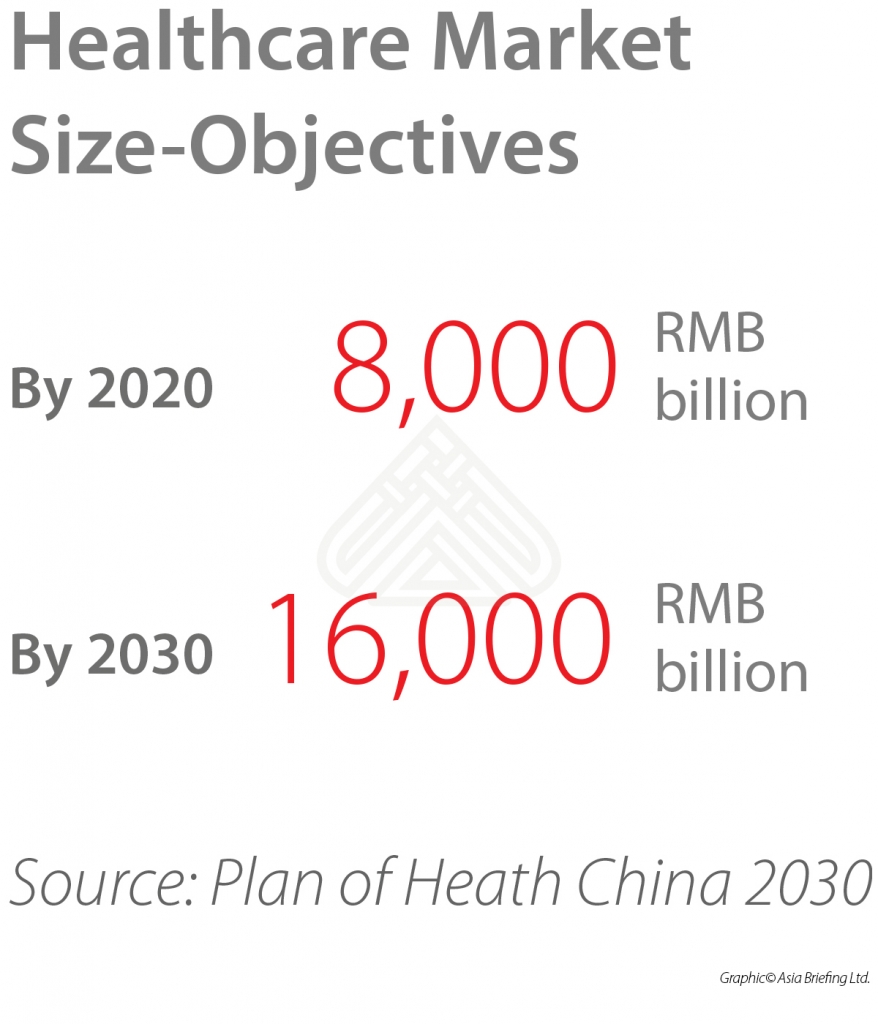By Dezan Shira & Associates
Editor: Qian Zhou
Due to its size and growth potential, China’s healthcare market is one of the most attractive in the world for foreign investors. China surpassed Japan to become the world’s second-largest healthcare market in 2013 and continues to develop at double-digit rates. Indeed, it’s the fastest-growing healthcare market of all large emerging economies.
Recently in 2016, China’s healthcare market reached RMB 5,670.3 billion (US$853.7 billion), an increase of 12 percent in local currency when compared with that of 2015.
Among others, the medical device market grew 20.1 percent to RMB 370 billion (US$56 billion) in 2016, while pharmaceutical and health products sales reached RMB 1,839 billion (US$277 billion), up 10.4 percent year-on-year.
Yet, the Chinese healthcare market is still relatively immature. Although healthcare expenditures in the country has increased more than four-fold – from RMB 1,096.6 billion (US$126.1 billion) in 2006 to RMB 4,634.5 billion (US$697.7 billion) in 2016 – healthcare spending per capita is only around six percent of its GDP..
/
This compares unfavorably with the 17 percent in the US, 10 percent in Japan and Europe, and the average nine percent in OECD countries. By 2020, China’s healthcare spending is expected to account for 6.5 to 7 percent of its total GDP, which is around US$1 trillion.
And by 2030, China’s healthcare market is targeted to reach RMB 16,000 billion (around US$2 trillion), as it is stipulated in the Plan of Health China 2030 released by the State Council in October 2016. Every health sector – from pharmaceuticals to medical devices – will have more opportunities.
While many market factors are positive, foreign investors must study the rapidly-changing regulatory environment for the industry. Healthcare reform in China started in 2009 and is still ongoing, often with different goals each year.
We summarize the major 2017 reforms below...






